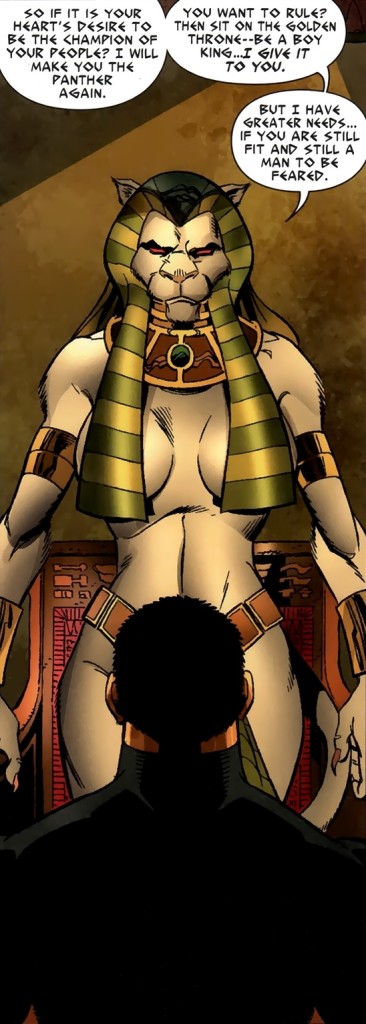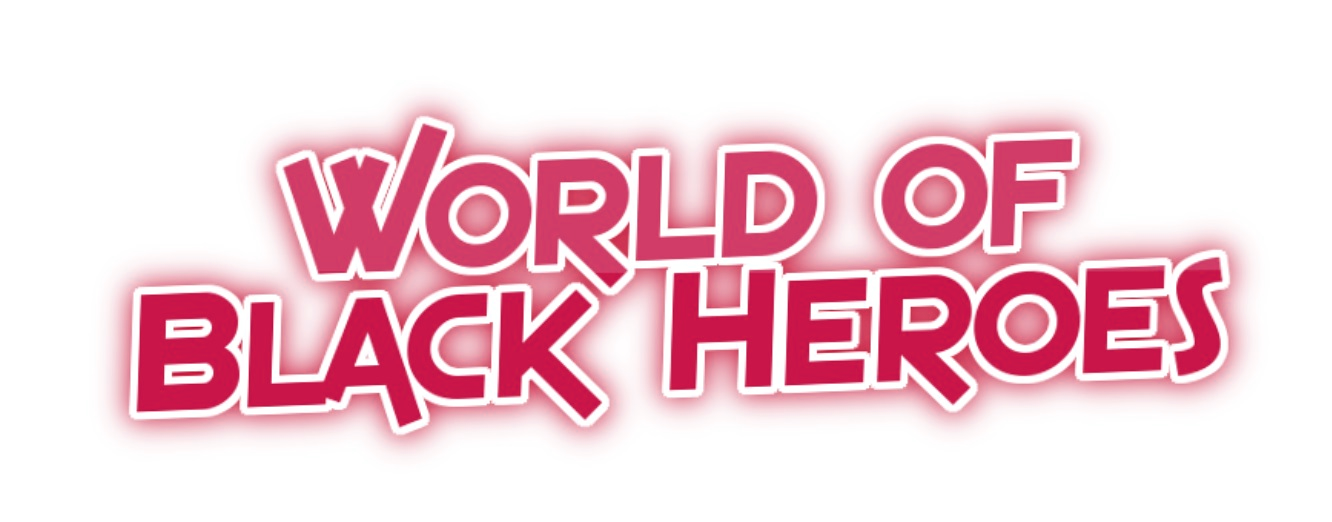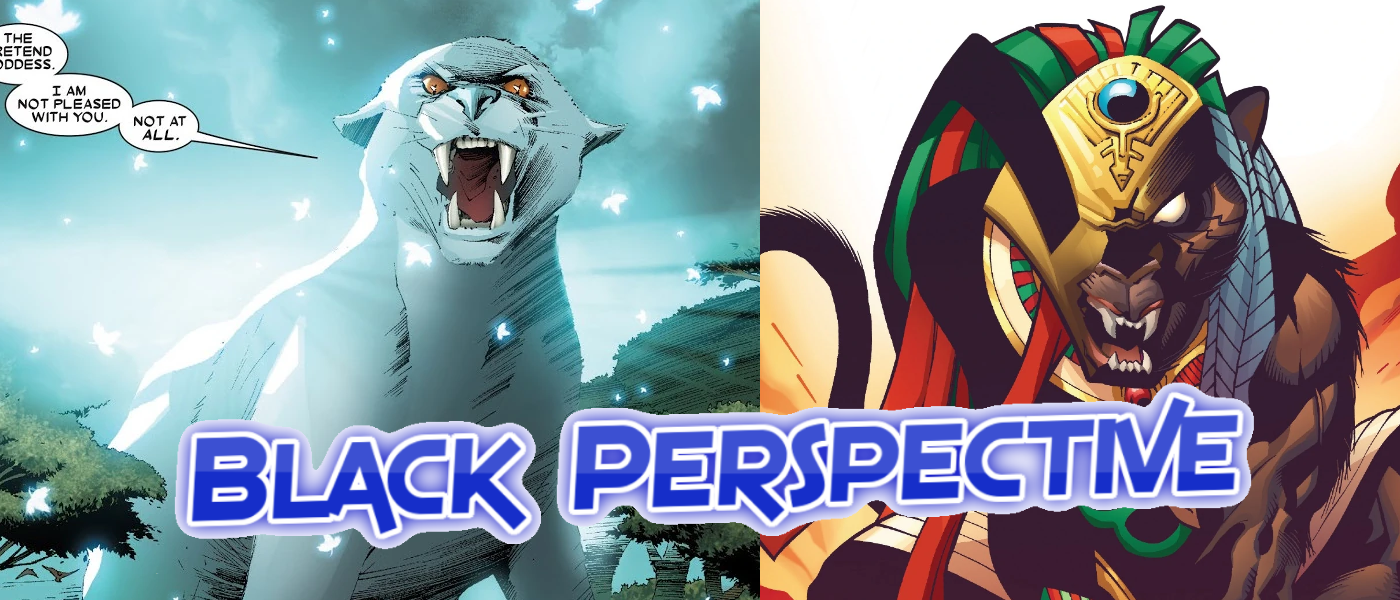In the Black Panther comics, Bast, also known as the Panther God or the Panther Goddess, is typically depicted as a powerful and mystical figure associated with the Black Panther superhero. The character’s representation as a large “white” feline has always been problematic to me and as I have delved more into academics and using comics in the medium of Education it has only become more so. While using Black Panther comics: specifically the Hudlin and Priest Runs; to teach/introduce many concepts across the curriculum a recurrent theme for each was , why was Bast White. Now let me give you some context. I had thought about this years ago, back when I was the top rated reviewer on Comicvine during the Hudlin years. I may have even had private conversations amongst my 60’000+ fanbase on facebook. Black Panther was still Niche at the time though and I guess I was the most vocal amongst fans who though the colonial undertones were worth mentioning. Fast forward to ten plus years of using comics in the classroom and being asked the same question from Elementary school to kindergarten (ages 5-10), middle school (ages 11-13), and high school (ages 14-18) students and it truly is worth addressing. Black Panther is now a Multi-billion Dollar movie Franchise and for all intents and purposes has gone “mainstream”. I always love looking at old comics with a modern perspective so allow me to express a controversial thought. Having Bast, the patron deity of an all black nation being depicted, up until Coates controversial run depicted as a large “White” feline God would indeed carry colonial undertones, given the context of the comics and the broader historical and cultural implications. Here’s an analysis of why this depiction could be seen as problematic in the context of colonialism:
- Cultural Appropriation and Misrepresentation: Depicting Bast, a significant figure in Wakandan mythology, as a white character would be perceived as cultural appropriation and misrepresentation. This is particularly problematic in the context of Black Panther, a story that centers on African and African diaspora culture, history, and identity. It echoes the historical trend of colonial powers appropriating and distorting indigenous cultures for their own purposes.

- Colonial Power Dynamics: Historically, colonial powers often imposed their beliefs, symbols, and cultural representations on colonized populations. By portraying Bast as a white figure, it can be interpreted as a continuation of these power dynamics, where a dominant culture (in this case, Western culture) supersedes and distorts indigenous narratives and symbols.
- Whitewashing of African Culture: The representation of Bast as white risks erasing and whitewashing African cultural and spiritual elements. African cultures have a rich tradition of diverse and complex spiritual beliefs and deities. Changing the racial identity of a key deity in Wakandan mythology undermines the authenticity and significance of these cultural aspects.
- Colonial Influence on Media: Throughout history, colonial powers have influenced the way media and narratives are constructed. In the context of the comics industry, which has its roots in the United States, depictions of African culture have often been influenced by colonial-era stereotypes and biases. The portrayal of Bast as white might be seen as a perpetuation of these influences.
- Missed Opportunity for Authentic Representation: By adhering to the traditional depiction of Bast as a white character, there may be a missed opportunity to authentically represent African and African diaspora spirituality and mythology in the comics. Embracing and respecting the diverse cultural and spiritual traditions of Wakanda would provide more meaningful and empowering narratives. This though has been alleviated during Coates Black Panther run where Bast was depicted as a black woman who then went on to inhabit N’Jadaka’s daughter and later fused with the villain Zenzi.
It’s important to note that the portrayal of Bast as “white” in comics up until the Coates run may not have been driven by malicious intent but rather a lack of awareness or understanding of the colonial implications. However, the criticism surrounding this issue highlights the importance of cultural sensitivity and authentic representation in storytelling, especially when it comes to narratives rooted in African and African diaspora cultures. Many fans and creators advocate for more accurate and respectful portrayals of African cultures in comics and media to combat colonial legacies and promote inclusivity.

